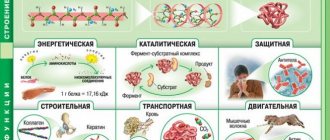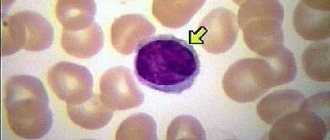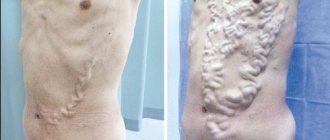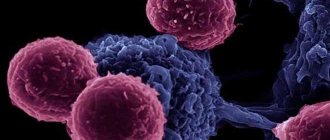Coagulopathy is a process in which abnormalities occur in the blood clotting system. It is characterized by extensive nasal hemorrhages , a lack of iron in the blood, as well as the formation of large hematomas on the skin.
Pathology can be transmitted from mother to child and develop throughout a person’s life. In the latter case, there is a sufficient amount of formed components in the blood, but their quality suffers.
In a normal state, a sufficient amount of hemoglobin protein, platelets and
red blood cells When there is open bleeding, the body initiates a process called coagulation to allow blood to clot and be delivered to the site of injury, stopping the bleeding.
Clogging of the wound occurs with the help of adhesive platelets, which replace the damaged walls of blood vessels and arteries.
Types of coagulopathy
The occurrence of blood clotting abnormalities has many different causes, but is divided into types solely according to the method of occurrence. There are two main types of coagulopathy:
Progressive throughout life. Pathology is acquired during the development of diseases, and is a complication against the background of another disease, being one of the symptoms.
Coagulopathy is mainly observed in infections caused by bacteria and malignant tumors. Some medications can also cause bleeding disorders.
Transmitted from mother to child. In this case, the pathology is congenital, and the disorder occurs at the level of homeostasis. The qualitative composition of formed elements is affected by a decrease in the saturation of biologically active substances in the blood.
There is a failure in the platelet formation system. Hereditary coagulopathies are divided into forms, depending on the absence of one or another component during the formation of a blood clot.
With extensive blood loss, the body cannot quickly restore the normal quantitative concentration of formed elements, which leads to a decrease in blood clotting and leads to coagulopathy.
Hereditary pathologies contain all forms of increased bleeding.
Blood loss and cardiac arrest lead to death in patients without effective therapy.
The general name for all forms of congenital coagulopathy is hemophilia.
And they are characterized by insufficient thromboplastin saturation.
The congenital form is divided into three more types, based on blood clotting factors:
- Group A. This subtype is characterized by insufficient saturation with antihemophilic globulin,
- Group B. Characterized by abnormalities in the balance of the Christmas factor (blood coagulation factor IX, alpha globulin protein),
- Group C. Progresses due to an insufficient amount of factor IX, which precedes thrombolastin.
Symptoms during the development of various forms of congenital pathology do not differ significantly. The first two forms affect only the male sex, a consequence of transmission of the disease from a woman, this is influenced by the X chromosome.
The last form (group C) can affect both men and women; this coagulopathy is not associated with chromosomal inheritance.
Developing throughout life include a large number of different conditions that manifest themselves in the form of coagulation disorders and bleeding. Gender does not play a role; it is mainly related to genetics.
In some cases, coagulopathy may be a consequence of the production of low amounts of prothrombin.
Its formation occurs in the intestines, with the help of vitamin K, bile and gastric juice.
With intestinal pathologies, infectious lesions, lack of vitamins in the liver, all this leads to a reduced formation of prothrombin, or the process of its absorption by the body is disrupted.
In many cases, coagulopathy associated with a high concentration of fibrin in the blood is recorded, which leads to a decline in fibrinogen. All this leads to thrombocytopenia (decreased platelet count), which in turn provokes increased bleeding.
Forms of the disease
As we have already discussed above, coagulopathy can occur as a result of a genetic problem or acquired through life. Each of the forms is divided into several diseases; let’s look at some of them in more detail.
- Hemophilia is a hereditary blood disease transmitted along the X chromosome, and therefore, is observed only in representatives of the stronger half of humanity. It appears in early childhood - heavy bleeding, long-term non-healing of wounds (in particular, the navel after birth, gums as a result of tooth loss). The disease is chronic and cannot be treated; it is only possible to speed up the blood clotting process by administering a special agent.
- Excessive use of anticoagulants (blood thinning medications). This may be caused by incorrect dosage of medications taken or taken without the supervision of a physician.
- Prothrombin deficiency. It develops as a result of a lack of vitamin K, due to dysbiosis and insufficient synthesis of the component in the human intestine.
What causes low blood clotting?
All types of low coagulability progress rapidly in the body.
The following factors can provoke coagulopathy:
- Disturbances in the production of hormones,
- Death of liver cells (cirrhosis), lack of fat in the liver,
- All types of hepatitis,
- Blood clot formation
- Poisoning by plant and animal poisons, heavy metals,
- Long-term use of anticoagulants (prevents the formation of blood clots and suppresses the immune system),
- Pathologies in which the thickness of the walls of blood vessels decreases,
- Low concentration of vitamin K (found in spinach, tomatoes, soybeans, beef),
- Failures in the absorption of substances in the intestine,
- Tumor formations of malignant and benign nature.
An aggravation of less blood clotting occurs when bacteria and viruses are present in the body.
One of the sharp exacerbations occurs with kidney failure. Since at this moment the blood is filtered less, and there is a greater accumulation of toxins and wastes that stagnate in the blood.
During periods of bearing a child, when the increasing size of the uterus puts pressure on the urethra and there is a load on the kidneys, reduced blood filtration in the kidneys and stagnation of waste are often recorded. Bed rest helps restore healthy blood circulation.
How to identify symptoms?
Symptoms are the same for both types of coagulopathy. An accurate diagnosis is made by a qualified doctor.
If you notice the following symptoms, you should go to the hospital for examination:
- When large hematomas form, from mild bruises,
- Increased hemorrhages both on the skin and mucous membranes,
- Nails become more brittle, hair falls out and teeth become deformed.
- Blueness of the hands and area under the nose,
- Symptoms of anemia
- Pale skin tone,
- In severe cases, hemorrhagic shock,
- Ischemia of internal organs,
- Long healing of wounds (long coagulation process), which are not affected by peroxide, brilliant green, or iodine.
Prolonged blood loss leads to the loss of large amounts of vitamin B and iron.
In childhood, coagulopathy is very dangerous, since at the stage of formation of the body a large amount of vitamins and iron is needed.
Symptoms and signs
Symptoms that a patient has poor blood clotting include:
- frequent nosebleeds that are difficult to stop;
- heavy periods in women;
- the appearance of bruises and hemorrhages on the skin for no apparent reason;
- bleeding gums;
- dizziness, weakness;
- the presence of blood in the stool, which may be a sign of internal bleeding.
If you have these signs, you should consult a doctor. He will conduct diagnostics that will help understand the cause of coagulation disorders and prescribe treatment.
The main rule for healthy blood and the body as a whole is timely treatment. If there is a disease that provokes a bleeding disorder or a questionable analysis, you need to correctly draw up an anamnesis and examine the accompanying symptoms.
Symptoms of the pathology include:
- Fatigue, “floaters in the eyes”, blurred vision associated with a lack of incoming oxygen.
- Headaches of a uniform pulsating nature.
- Dizziness with simultaneous short loss of coordination.
- Weakness and trembling of muscles.
- Severe nausea.
- Loss of sensation in the limbs, tingling, burning sensation and complete atrophy.
- Dry skin and mucous membranes, frequent bruises (even with light impacts).
- A noticeable reaction to cold is trembling, reflection.
- Poor sleep, asthma attacks.
- Painful sensations in the heart area - tingling, abnormal heart rhythm, lack of air, shortness of breath.
- Depression, accompanied by nervous disorder, tearfulness.
- Burning of the mucous membrane of the eyes, sensation of an extra particle.
- Slow flow of blood in wounds, its rapid “solidification”.
- Multiple terminations of pregnancies.
- Diseases of a systematic nature.
- Frequent urge to yawn.
- Cold extremities, heaviness in the legs, clearly visible venous pathways.
Only the presence of several of the above signs at the same time allows us to think about a blood clotting disorder among other pathologies. But for a correct diagnosis it is necessary to carry out a number of special medical examinations.
What happens during pregnancy?
Predominantly coagulopathy develops in pregnant women with the occurrence of some pathologies presented below:
- Disease of the circulatory system and formation of blood cells,
- Diseases caused by a lack of vitamins in the body
- Varicose veins,
- Thrombophlebitis of a chronic nature (is an inflammation of the venous walls, with the formation of blood clots in them).
Women who have had significant blood losses in the past and are burdened with thromboembolism are at greater risk. People suffering from diabetes are also prone to developing coagulopathy.
Such women should be monitored by a doctor throughout the entire period of pregnancy , regularly undergoing tests and examinations, as well as taking prescribed courses of therapy. In most cases, such expectant mothers are admitted to a hospital for the entire duration of pregnancy.
Establishing diagnosis
Initially, you need to come for an examination to a doctor. At the first meeting, he listens to the patient’s complaints and performs an initial examination, studying the medical history. After which, if coagulopathy is suspected, the doctor will order blood tests (clinical and biochemical), as well as a urine test.
If the results of a urine test contain a large amount of calcium, suspicions arise about the presence of malignant tumor formations in the body, which lead to bleeding.
If a large amount of proteins is found in the urine, then an ultrasound of the kidneys is performed to determine their performance and activity.
Among blood tests, the main stages that doctors pay attention to are:
- Carrying out an analysis for the concentration of fibrinogen in the blood, which in the case of coagulopathy is marked by a decrease,
- The hemorrhage time is measured, which in the case of pathology is many times longer than normal,
- The number of platelets in the blood, in pathology, is significantly lower than normal,
- Determine the main blood factors.
Due to the fact that coagulopathy can be only one of the symptoms of the disease, examinations of the body are carried out to identify pathologies of organs, blood and vessels.
Among them:
- Clinical blood test. It will show the general health of the patient, and deviations from the norm of the elements that saturate the blood. Determines the development of coagulopathy. In blood tests, low concentrations of hemoglobin, red blood cells and platelets may indicate coagulopathy. Blood is taken from a finger or vein, in the morning and on an empty stomach,
- Blood chemistry . An extensive blood test that will help determine the condition of almost all organs of the body. By fluctuations in indicators in one direction or another, it is possible to determine not only the affected organ, but also the extent of its damage. They take this test on an empty stomach, in the morning, providing blood from a vein or finger,
- Blood clotting test (coagulogram) . Certain tests whose purpose is to determine blood clotting. The analysis evaluates the ability and efficiency of coagulation. Blood donation occurs, as in biochemical analysis,
- General urine analysis. Doctors diagnose kidney damage by monitoring levels of protein and red blood cells in the urine,
- Ultrasound examination (ultrasound) . A study with which you can visually see the condition of organs and blood vessels and notice deviations in them,
- X-ray studies,
- MRI (magnetic resonance imaging). Provides complete information on the state of the body. But it is a very expensive analysis.
The choice of the study is at the discretion of the doctor, taking into account additional symptoms and complaints of the patient.
Reasons for the development of the disease
There are two main ways of developing the disease:
- Hereditary - develops as a result of the presence of genetic pathologies, in particular, insufficient content of plasma components of homeostasis, their low quality. The most common form of the disease is hemophilia.
- Acquired - in this case, coagulopathy occurs due to a serious infectious disease, as a result of liver disease, kidney disease, or the presence of malignant tumors. In addition, the disease can develop from large blood loss, as well as chemical, pharmaceutical or mechanical effects on the body. Diseases often arise due to an unhealthy lifestyle: excessive alcohol consumption; unbalanced diet, frequent viral diseases.
Each type of coagulopathy manifests itself differently, but all types have the following symptoms:
- Excessive pallor of the skin.
- Hemarthrosis (outflow of blood into the joint cavity).
- Poor blood clotting.
- Bleeding that stops for a long time, for example, after tooth extraction or injury.
- The appearance of hematomas on the skin even as a result of minimal exposure, which is caused by hemorrhages into the skin.
- Hemorrhagic syndrome.
- Hematuria (presence of a large number of blood cells in the urine).
How is low coagulation treated?
For an effective course of treatment, it is necessary not only to constantly take medications, but also to lead a healthy lifestyle and diet. The main goal of therapy is to eliminate the cause that caused the disease.
In case of severe injury, a patient with coagulopathy requires urgent hospitalization. In intensive care, lost blood is replenished using special solutions in the form of droppers. In case of large blood losses, a transfusion of compatible donor blood is given.
To normalize coagulation to the desired level, certain medications are mainly used:
- Iron-containing preparations (Fenuls, Sorbifer),
- Antibiotics (Clarithromycin, Amoxiclav, Amoxicillin),
- Chemotherapeutic agents,
- Plasma substitutes,
- Consumption of vitamin and mineral complexes,
- Antispasmodics (Drotaverine, Spazgan),
- Glucocorticosteroids (Dexamethasone, Prednisolone).
To stop open bleeding in a patient with coagulopathy, a homeostatic collagen sponge or powder is used. If they do not bring any effect, then the spleen is removed through surgery.
It is also recommended to remove heavily overcooked, spicy, salty foods from your diet, as well as get rid of alcoholic beverages.
Treatment
Treatment of coagulopathy depends on the type of pathology. With congenital coagulopathy, it is necessary to lead a certain lifestyle, which includes regular use of medications and adherence to a special diet. The acquired disease must be treated in a complex manner to eliminate the cause and symptoms.
If the cause is severe trauma, the patient must be urgently hospitalized. In the intensive care unit, a person is given a blood transfusion. To restore coagulation, the patient is prescribed the following medications:
- glucocorticoids;
- antibiotics;
- antispasmodics;
- vitamin and mineral complexes;
- preparations containing iron.
To restore coagulation, plasma substitutes or platelet mass are used. You can stop bleeding on the skin using a collagen hemostatic sponge or powder. If drug therapy does not produce the expected results, excision of the spleen is performed.
Preventive actions
There are no special measures to prevent coagulopathy.
Doctors recommend adhering to the following recommendations in order to prevent bleeding disorders as much as possible:
- Regular examinations,
- Healthy lifestyle.
- Avoiding traumatic situations. It is necessary to prevent possible injuries, since bleeding stops slowly. And large injuries, with coagulopathy, can lead to disastrous consequences,
- Proper nutrition. Another key to preventing many diseases is a balanced, healthy diet. You should consume more foods rich in vitamin K (spinach, soy, strawberries, potatoes, veal, tomatoes, cod, cauliflower, rose hips).
The key to preventing most diseases is maintaining a healthy lifestyle and a balance between work and proper rest.
Following these simple recommendations will help prevent blood clotting disorders. And it will help in its effective treatment.










